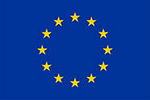Among the nine major Flagship Projects (FPs) funded by Europe’s Rail Joint Undertaking (EU-Rail), FP2-R2DATO plays a...
The Train Control and Monitoring System (TCMS) is both the brain and the backbone of a train. As such, it plays a critical role in vehicle performance.
This role includes integrating and managing all on-board information and enabling communication between equipment, between vehicles, and between the train and the ground. It also involves helping manage the interaction between a train’s different subsystems.
But as trains evolve, so too must the TCMS. The problem is that today’s TCMS aren’t up to the task. Although reliable and robust, these TCMS are based on technologies and concepts that date back to the 1990s. Needless to say, a lot has changed since then.
As such, TCMS come with a number of inherent limitations:
- It requires extensive cabling throughout the train for train control functions, estimated at over 10km for each 20m railcar and requiring significant energy to transport the associated weight.
- Systems using TCMS require their own set of electronic end equipment, adding extra weight and consuming valuable space.
- Different multiple units cannot be coupled together, preventing interoperability between different vehicles and limiting operational flexibility.
- Systems with different safety-critical levels cannot be integrated, further increasing cabling and space requirements.
- The cost, time, and effort needed to achieve authorisation and certification are high and require access to live train equipment for testing and validation.
What rail clearly needs is an updated TCMS architecture – which is exactly what the Train Control and Monitoring System Demonstrator has provided.
Enabling the next generation of TCMS
An initiative of the Shift2Rail programme, the Train Control and Monitoring System Demonstrator (hereinafter, ‘Demonstrator’) set out to develop and validate the next generation of TCMS (NG-TCMS).
Specifically, the Demonstrator envisioned an NG-TCMS that would:
- Replace legacy communication systems with Ethernet or wireless technologies and, in doing so, simplify the overall network architecture and replace conventional train lines.
- Use safety critical functions up to safety integrity level (SIL) 4.
- Use time-critical functions that require low latency and low jitter.
- Create a single network to interconnect all on-board equipment, including TCMS, signalling, brakes, CCTV, and entertainment services.
- Ensure interoperability between rail vehicles from different suppliers and operators.
The challenge: there’s a considerable technology gap between today’s TCMS and this envisioned NG-TCMS.
To help fill this gap, the Demonstrator conducted an extensive amount of research, development, modelling, and testing – a process that ultimately resulted in the creation of several new NG-TCMS enabling technologies.
Key outcomes
- Wireless TCMS, including wireless train backbone, wireless consist network, and standardised and secure train-to-ground (T2G) links.
- Next generation Train Communication Network (NG-TCN), including SIL4 communications to support the drive-by-data (DbD) concept.
- Functional Open Coupling (FOC), the communication mechanism that allows the coupling of two or more consists regardless of their manufacturer.
- Function Distribution Framework (FDF), comprising of middleware that abstracts applications running on top of it from the underlying hardware and communications.
- Virtual certification simulation framework.
Towards acceptance and adoption
All these NG-TCMS enabling technologies were tested and validated via two laboratory demonstrators:
Demonstrator 1: Regional trains from different suppliers to prove interoperability.
Demonstrator 2: Urban trains to prove safe operation under more severe operational conditions.
Some technologies were also tested in real train units, including onboard a Euskotren UT973 unit operating on a line in northern Spain.
The laboratory tests were divided into those involving a moving train, those proving conformance with requirements and standards, and those using a virtual cabin. Tests carried out on real trains validated real train location information using the FDF and conducted real-time data transmission tests using T2G.
One highlight of this testing process was a demonstration of the NG-TCMS architecture’s alignment and compatibility with other on-board systems, including with a standardised control, command, and signalling (CCS) architecture currently being developed by OCORA, the initiative for the on-board European Train Control System (ETCS) of the future.
Details on the testing
The urban test demonstrator, which was built in the CAF laboratory, included tests incorporating a virtual driver’s cabin located remotely in the SNCF laboratory. CAF’s implementation of a signal-based FDF capable of executing safety-related applications (up to SIL2) was certified for a real train environment. An SIL4 architecture for the FDF was also designed.
The urban real train unit used Euskotren’s commercial train to carry out an integrated technology demonstrator that combined FDF and T2G, together with the safe location functionality provided by CAF.
The regional laboratory tests were carried out by Alstom and Siemens and focused on several NG-TCMS technologies. FOC conformance tests and subsystem application profile tests were successfully executed, with the latter addressing different train subsystems (e.g., doors, lighting, fire detection). Real-time data communication tests at both the network and system levels were also conducted. The tests also made extensive use of a virtual certification framework, which simulated the relevant subsystem, train control or coupled consists, thus saving considerable time and effort.
The regional real train unit used the DB Advanced TrainLab to carry out those tests that could not be comprehensively conducted in a simulated environment. These included T2G and Wireless Consist Network (WLCN) tests, with the latter showing mixed results (improvements being needed in Wireless Access Point (WAP) devices).
Together, these tests succeeded at advancing all NG-TCMS technologies to a Technology Readiness Level (TRL) of 6 or 7. They also provided the necessary groundwork to prepare the technologies for acceptance and adoption in a real train architecture.
Reshaping the TCMS landscape
Today’s train communication systems primarily rely on multiple train lines and multiple train networks to carry out all TCMS and on-board multimedia and telematic services (OMTS) (which share the communication network with NG-TCMS).
But thanks to the work done by the Train Control and Monitoring System Demonstrator, this is starting to change. For instance, the updated versions of IEC 61375-2-3 and IEC 61375-2-5 incorporate NG-TCMS concepts (see boxed text on standardisation and regulation).
A note on standardisation and regulation
The work carried out by the Train Control and Monitoring System Demonstrator had a considerable impact on existing standards which, in many cases, are not suitable for the new NG-TCMS concepts and technologies being developed. Thus, the results from the Demonstrator helped the Shift2Rail programme advise on the need to update a wide range of standards and regulations, including the IEC 61375 standard covering the train communication network.
The Demonstrator’s work allows for the reimagining of the TCMS landscape, putting the concept of a Next Generation Train Control Monitoring System within reach. It also created a unique opportunity for railway stakeholders – including operators, infrastructure managers, and suppliers – to further advance its NG-TCMS enabling technologies, transforming them into market-ready solutions.

















